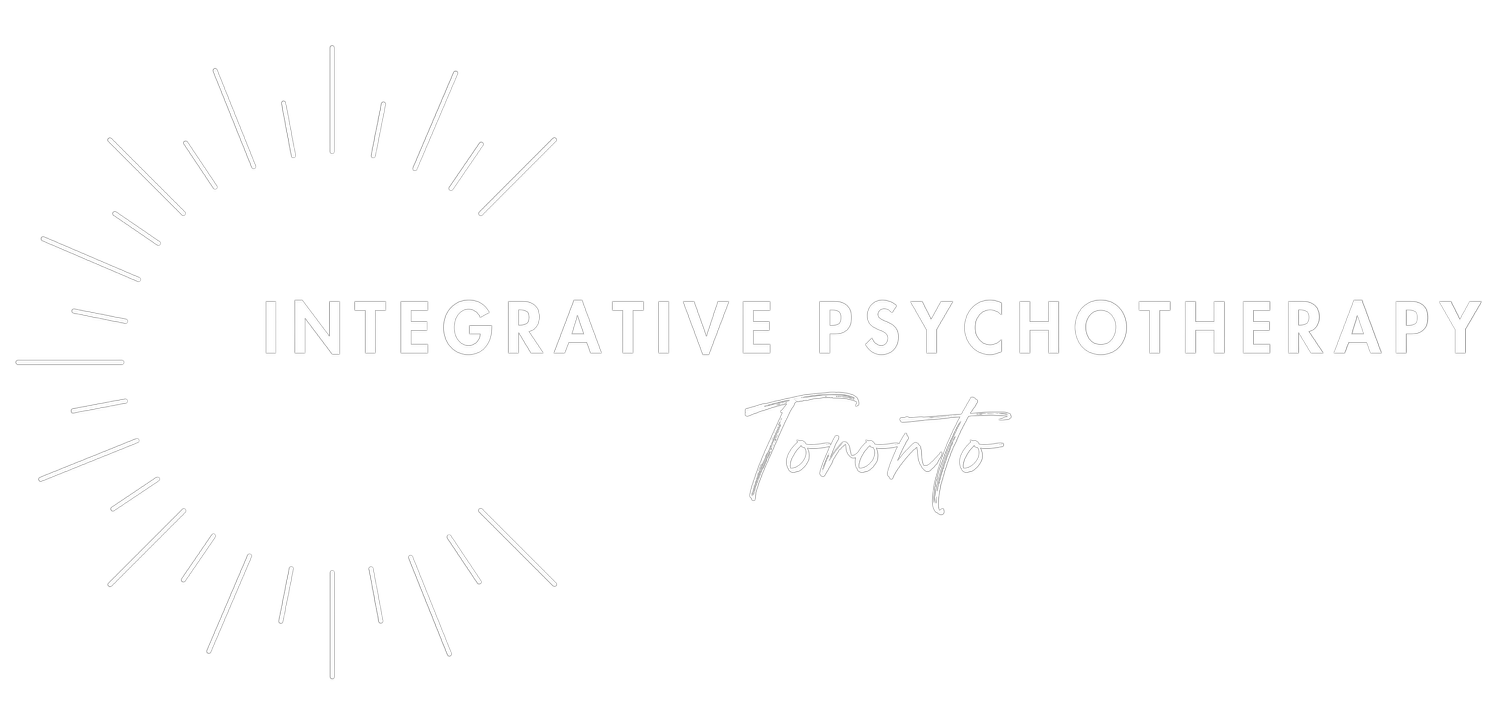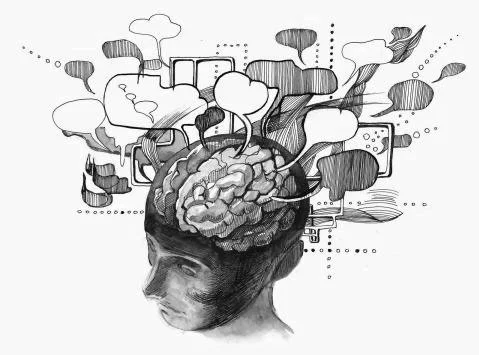why story time may not be for therapy
Key points:
This is the blog version of my video The Role of Stories in Therapy. If you’re more of a tl;dr kind of person, you may prefer the video.
All of our stories - our narratives, our thoughts, our judgements, our interpretations - are symbolic. They are linguistic representations of what is happening in the experiential realms. Taking them as “truth” is like thinking the story of The Tortoise and The Hare is really about two animals racing.
Stories are symbols, or signposts. They’re pointing at something, but they’re not the thing itself. The trouble comes when we confuse the symbol for what it is symbolizing, when we confuse the story for the truth.
To find the truth, we need to look deeper; we need to get out of the cognitive realm and into the experiential realm.
The Conversation
This conversation was with a new client who has quite a significant trauma history and one of the big barriers for her to therapy was the idea that she’d have to tell her story. Talking about what had happened was quite triggering for her, and while she wanted help, the idea of having to go through all that was really anxiety provoking.
She was brave, though, and had steeled herself to the idea that she was going to have to go through her history. So she was kind of surprised when I said, “Oh, no worries, I don’t need to know the story.”
What are Stories?
What do I mean when I say “stories”?
Well, let’s use a story. Most of us know the story of the tortoise and the hare. Most of us also know what this story is actually about, and it’s not actually about a tortoise or a hare.
There’s a “truth” in this story that is entirely separate from the “facts” of the story, and if someone starting debating the “facts” of the story - was there actually a tortoise and a hare? How far did they race? What was the track like? And who was monitoring this race? - you’d think they were a lunatic. You’d be like, dude, you’re really missing the point here. You’re losing the forest for the trees.
And yet while that’s so easy to see with those kinds of stories, it’s much harder to see with our own stories. With our own stories - the narrative we create around an experience, the thoughts and judgements and interpretations we form - we spend most of our time analyzing trees and losing the forest, debating the “facts” and completely missing the truth.
All stories are symbolic. All of them. That sounds extreme, until you remember that experience is built bottom-up. If you remember Dan Siegal’s Hand Model of the Brain, it goes sensations, emotions, thoughts. Thoughts, the stuff of stories, are a linguistic representation of what’s happening on the lower levels. They are a map that describes the experiential terrain, but they’re not the terrain it self. They’re symbolic. (For more on this, check out Why The Physical Experience of Your Feelings Matters)
All of our narratives, all of our thoughts, all of our judgements and interpretations, are all symbolic in the same way the story of the tortoise and the hare is symbolic.
And realizing that is very important, because if we don’t, we can spend our whole life trying to figure out the logistics of a fictional race between two animals that are unlikely to have ever crossed paths.
Stories, narratives, thoughts, are symbols. They’re not the same as the thing they’re trying to symbolize.
Reading a menu is not the same as eating the meal.
Looking at a map is not the same as walking the terrain.
Describing the colour red is not the same as seeing it.
Menus, maps, descriptions, stories, words are concepts. They’re symbols that we’ve constructed to point at something. Which is super useful. The trouble comes when we confuse the menu for the meal, the map for the terrain, the description for the experience, the story for the truth.
If you believe every thought you have, if you take every story your mind forms at face value, my friend you are in for a bumpy ride.
We need to look deeper. We need to seek out the truth rather than getting lost in the “facts.”
So how do we do that?
Seeing The Forest
The truth doesn’t lie in the thoughts or the words or the narrative. Remember, words are just symbols. We need to look for what they’re symbolizing.
The truth lies in the experiential realms. We find the truth by dropping the narrative, getting out of the upstairs brain and into the downstairs brain, out of concepts and into experience.
The natural next question is, how do you do that?
This is another one of those “Simple. Not easy. But Simple.” things. You have to get out of the head and into the body. As that story is going on, what’s happening in the body? There’s a nonverbal story that’s playing out in the body that the verbal story is only a poor approximation of. We need to learn to listen to that story if we want to find the truth.
I did a post on a practice called RAIN, which is brilliant at helping us listen to the nonverbal story and I’ll link that here.
My Own Story
I had a story for a long time that people suck. I don’t know if I would have consciously framed it that way, but that was the gist of the story. I expected people to be jerks, I would be guarded anytime I had to interact with people I didn’t know well, I was tight and braced anytime I had to be in a group, and I was real quick to become prickly and go on the offence at the slightest indication that whoever I was with was, in fact, a jerk.
And I spent years in therapy unknowingly dedicated to dissecting and analyzing that story. Debating the “facts” of the story. We’re they actually being a jerk? If they were, does that mean all people are jerks? How many people are actually jerky to you on a daily basis?
Years, and a lot of money, looking at trees. Trying to prove or disprove the story. Cutting down one tree and trying to plant another, meanwhile the forest is the same. And ultimately, best case scenario - which I was not - that just replaces on story for another, and it doesn’t actually change the experience at all.
Things changed when I worked with someone who didn’t care too much about what I had to say. In fact many times, I’d be describing a situation, usually how someone had wronged me in some way, and he’d just look at me with a raised eyebrow until I paused and he’d say “Hmmmm. Lots of stories.”
Which I didn’t like too much, because as far as I was concerned, they were not “stories” they were “facts,” and also, what am I paying you for if not to listen to the things I’m struggling with. He was quickly becoming another data point confirming my “people are jerks” narrative.
“You like this story?” He asked me one time
“No, I don’t like this story!”
“You would like to get out of this story?”
“Yes!”
“Hmmmm. You ask me where the horse is and you’re riding on it.”
That one took a while to sink in.
But I started to see… I was asking where the forest was while clinging to a tree. I was asking how to not walk through the world feeling like people were jerks while clinging to the “facts” that people were, in fact, jerks.
There is a kind of delusion in that. In taking our stories as truth.
As he helped me get out of that story, and into the experience, I started to see the forest. I started to understand the truth that my story was pointing at. It was the truth of a little girl that had often been treated harshly and still expected harshness every where she went.
And the more I dropped the story and went into the experience, the more I healed, and the more I healed, the more I realized how much time I’d spent looking at the world through the eyes of that hurt little girl. I’d been projecting that unhealed wound from the past outwards onto everyone I interacted with. All people were’t jerks, but walking around with unhealed wounds of when people weren’t so nice to me made me see everyone as a potential threat and guard against them.
Practicing Finding the Forest
That obviously took some time, but it starts with realizing our stories aren’t truth. And that doesn’t mean we dismiss them, but we look deeper. We use them as the sign posts they are and let them take us to the truth.
And we do that, by going into the physical experience.
A really simple starting point is just to practice getting out of the upstairs brain and into the downstairs brain, out of the head and into the body. We live in a very conceptual world and most of us have been trained from a very young age to disconnect from our bodies. We become cognitively dominant, and live a great deal of our life up here rather than down here. So a great practice is to get in the habit of doing a daily check-in. One sensation and one emotion. It’s like asking yourself, “what’s the weather like inside?” No story, just one sensation and one emotion. This is flexing the muscle of going into the downstairs brain, which is the foundation of getting out of our stories and closer to our truth







